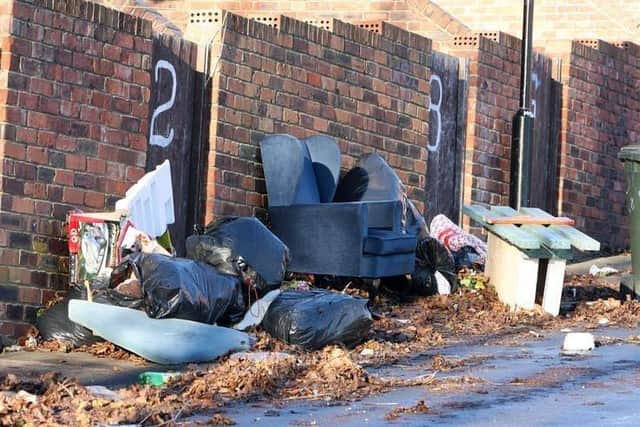Fly-tipped waste found in Eastbourne once every day
and live on Freeview channel 276
Fly-tipped waste is discovered in Eastbourne once a day on average, figures reveal.
Department for Environment, Food and Rural Affairs data shows 526 fly-tipping incidents were reported to Eastbourne Borough Council in 2019-20 – the same number as the previous year.
Advertisement
Hide AdAdvertisement
Hide AdThe Local Government Association warned that the offence costs taxpayers almost £50 million a year to clear up.


Dumped waste was found on Eastbourne’s roads and pavements 113 times accounting for 21% of incidents while 61 discoveries were made on footpaths and bridleways (12%).
Fly-tipped rubbish can include household waste, white goods and construction waste.
Environmental Charity Keep Britain Tidy says the crime is being driven by conmen who offer to remove household rubbish for a fee but do not dispose of it correctly.
Advertisement
Hide AdAdvertisement
Hide AdAcross England, the most common amount of rubbish dumped and reported to councils is equivalent to a small van load.
Rubbish loads of this size accounted for 34% of all 976,000 fly-tipping incidents nationally last year.
Across Eastbourne, small van loads of waste were dumped illegally on 380 occasions – 72% of all reports.
A further four incidents saw fly-tippers discard enough rubbish to fill a tipper lorry each, costing the council £600 to clear.
Advertisement
Hide AdAdvertisement
Hide AdDavid Renard, environment spokesman for the Local Government Association, said, “Fly-tipping is inexcusable.
“It is not only an eyesore for residents, but a serious public health risk, creating pollution and attracting rats and other vermin.
“We continue to urge the Government to review sentencing guidelines for fly-tipping, so that offenders are given bigger fines for more serious offences to act as a deterrent.”